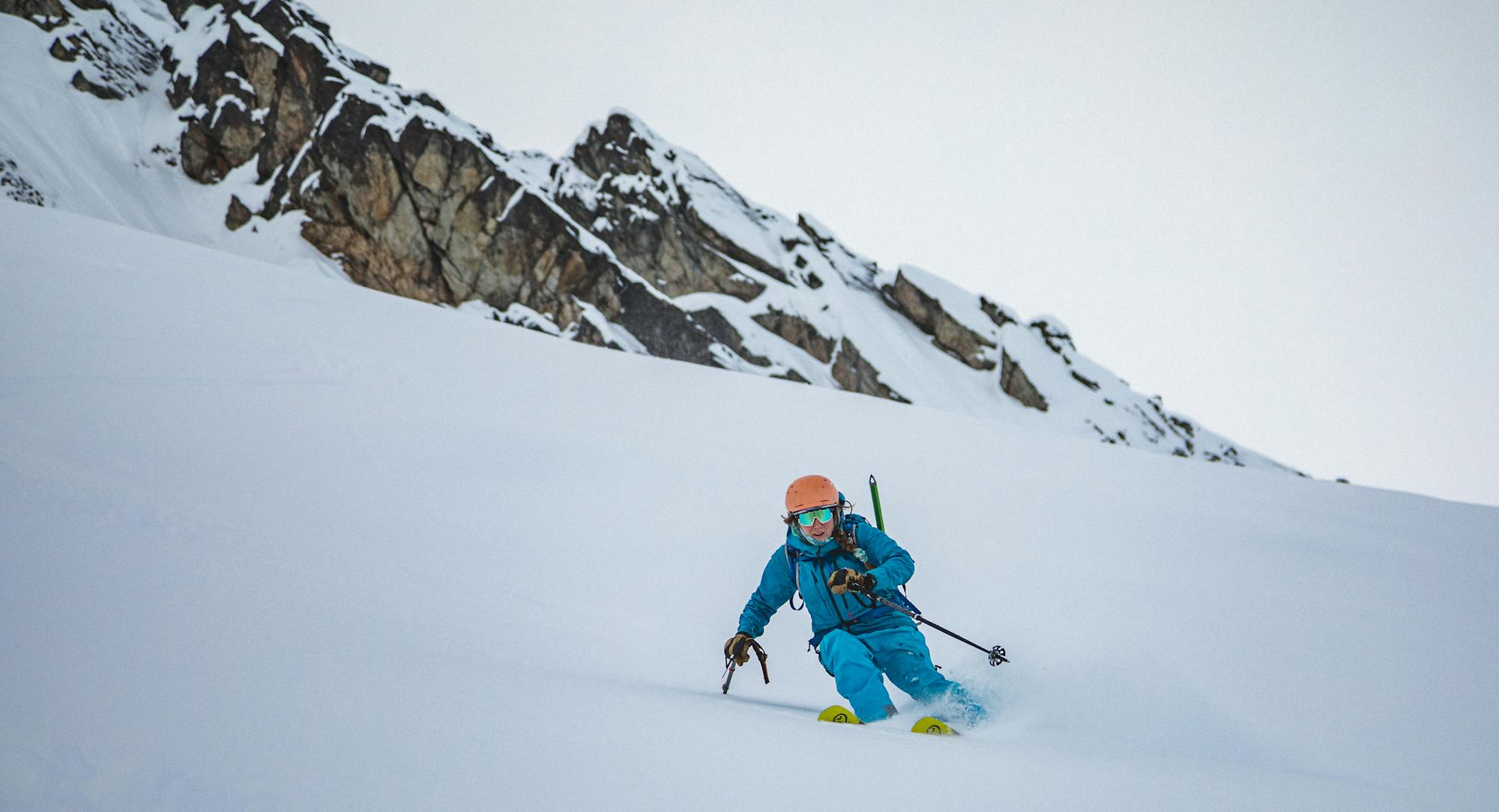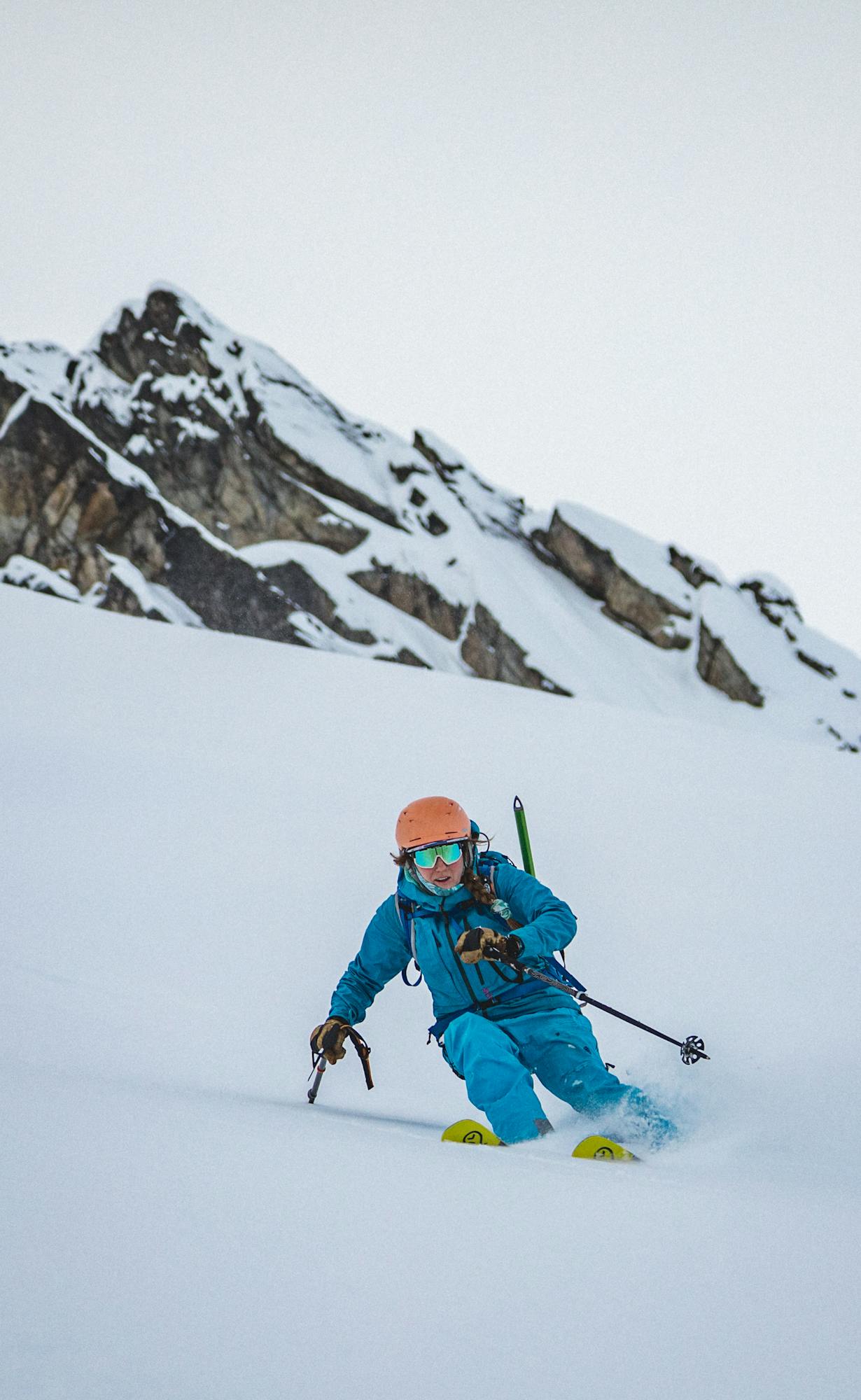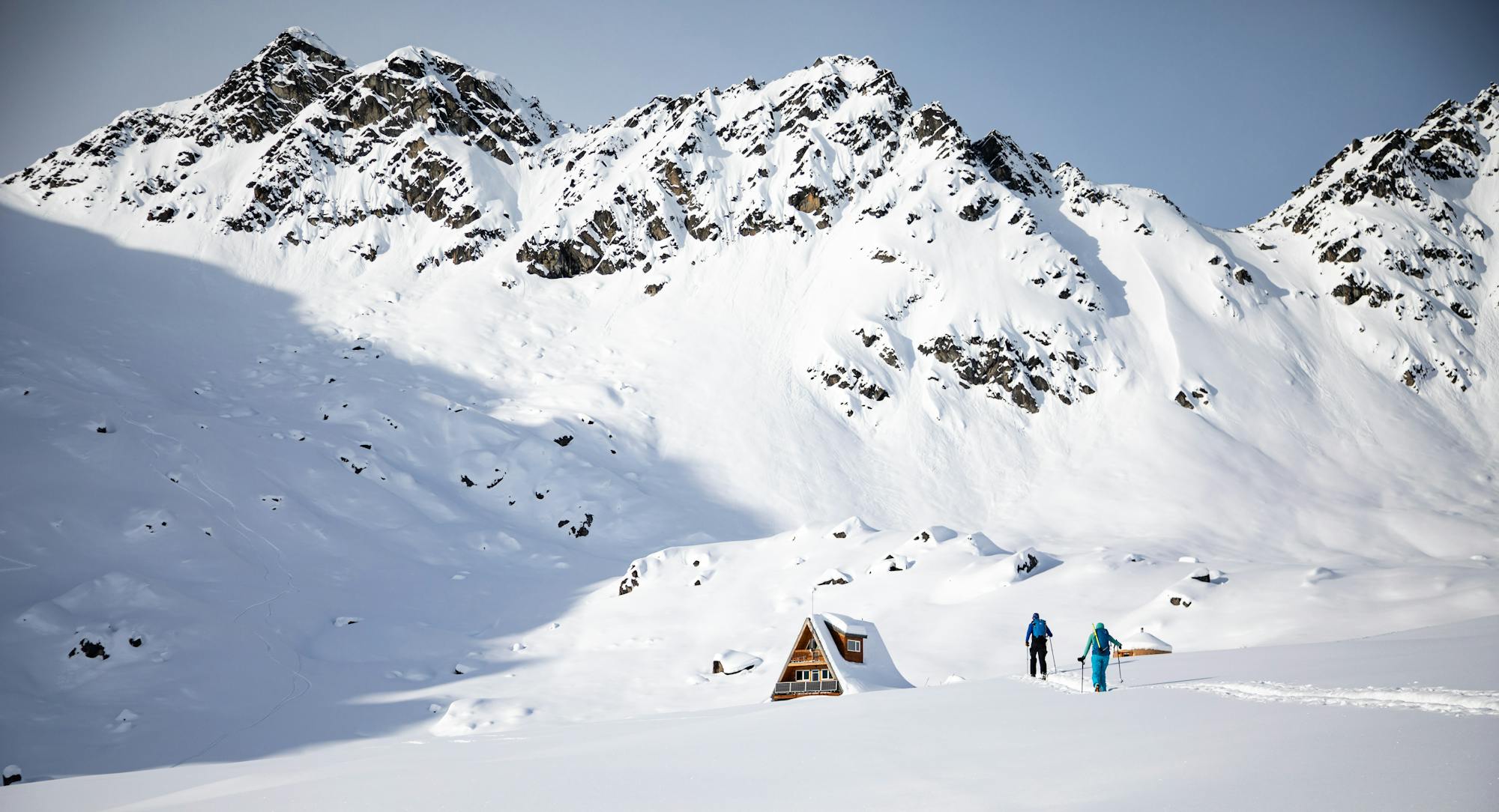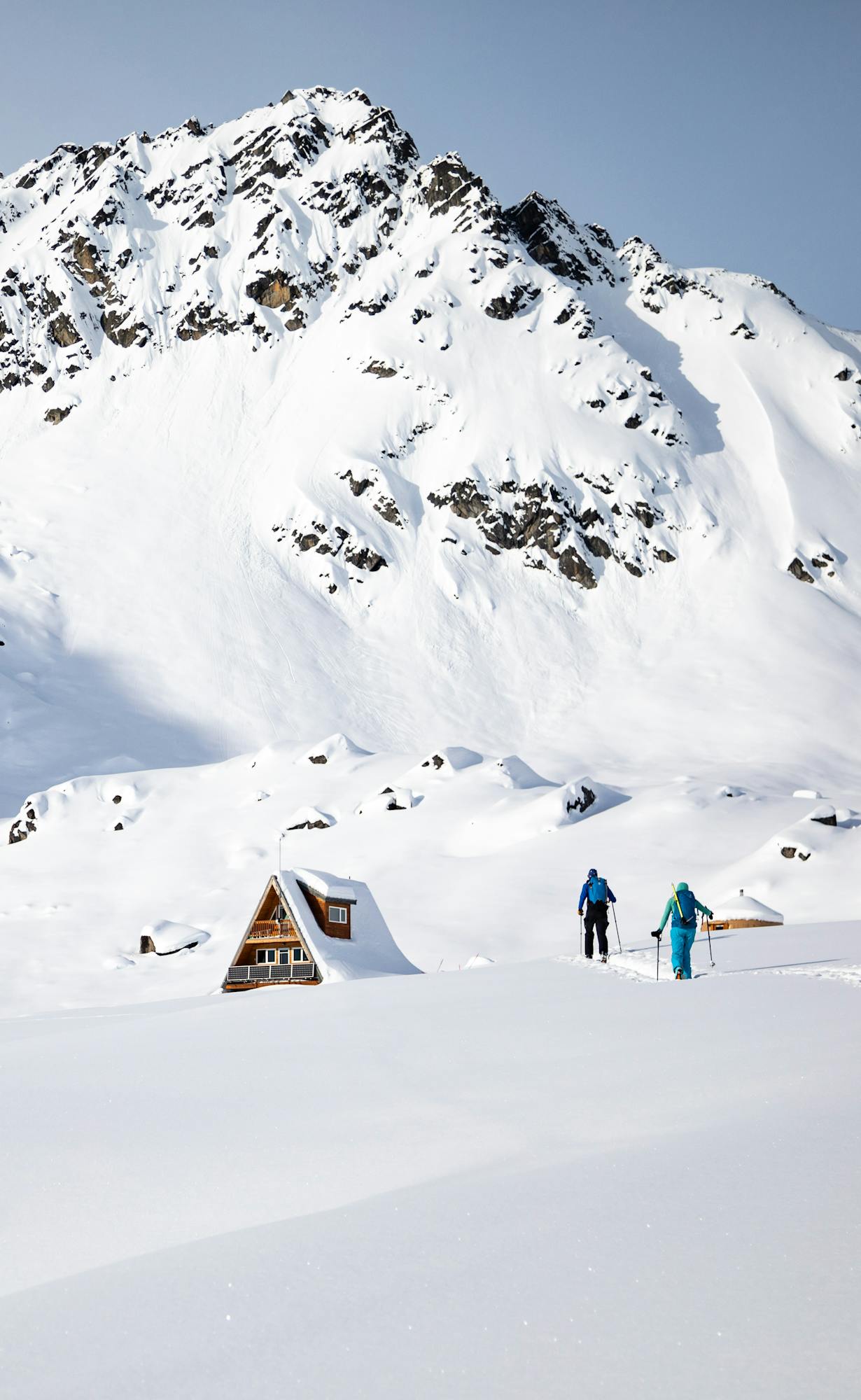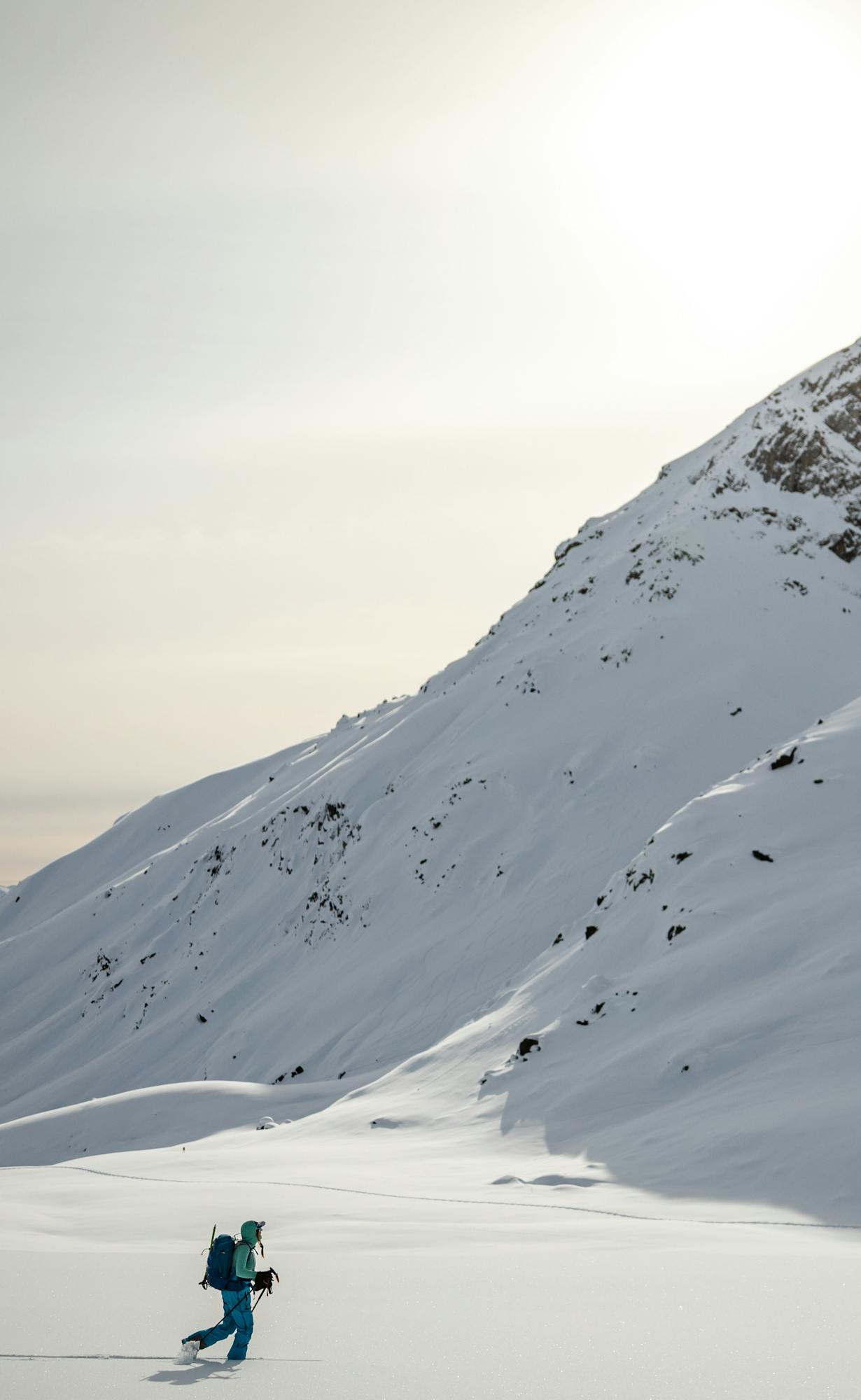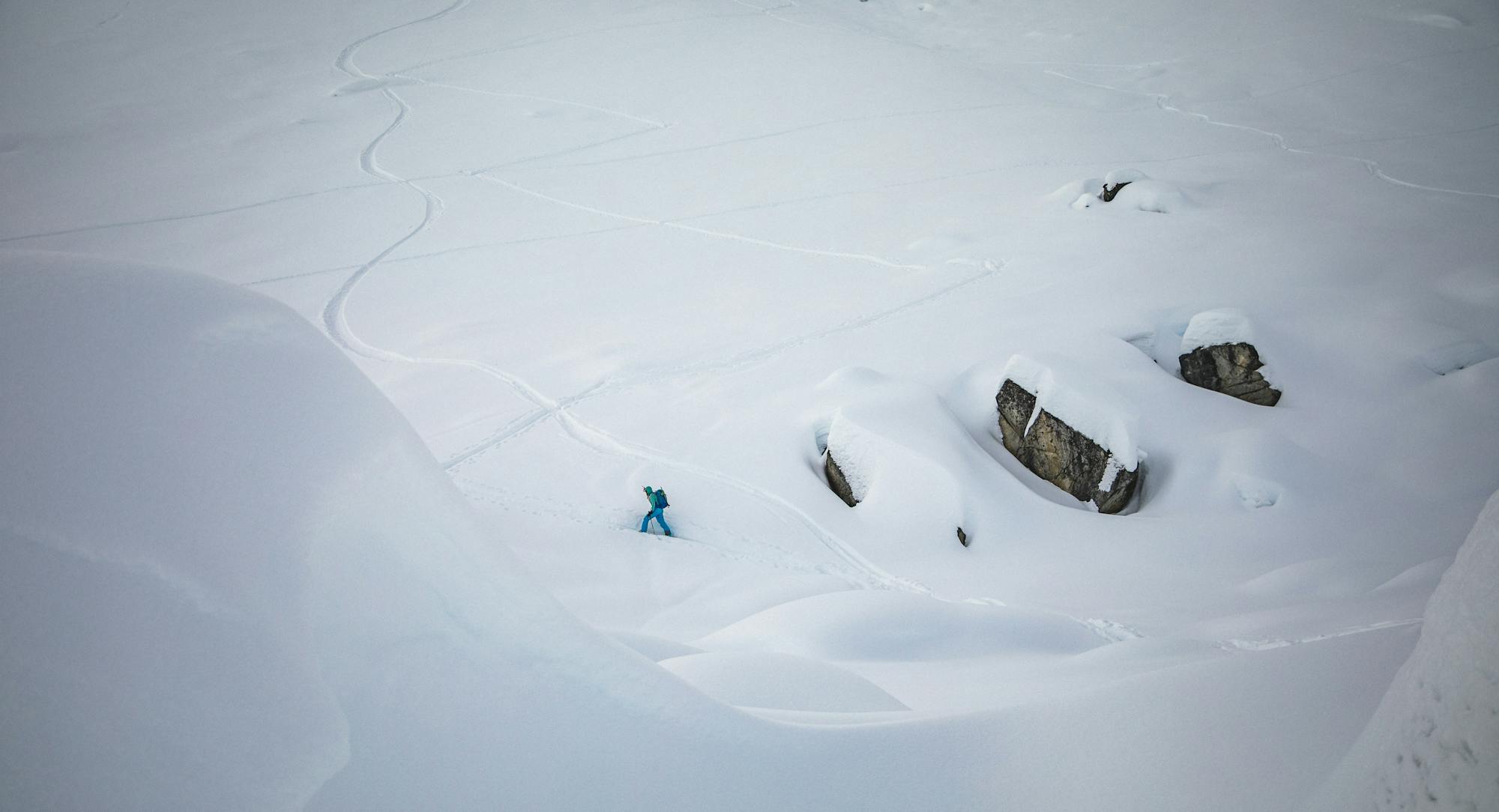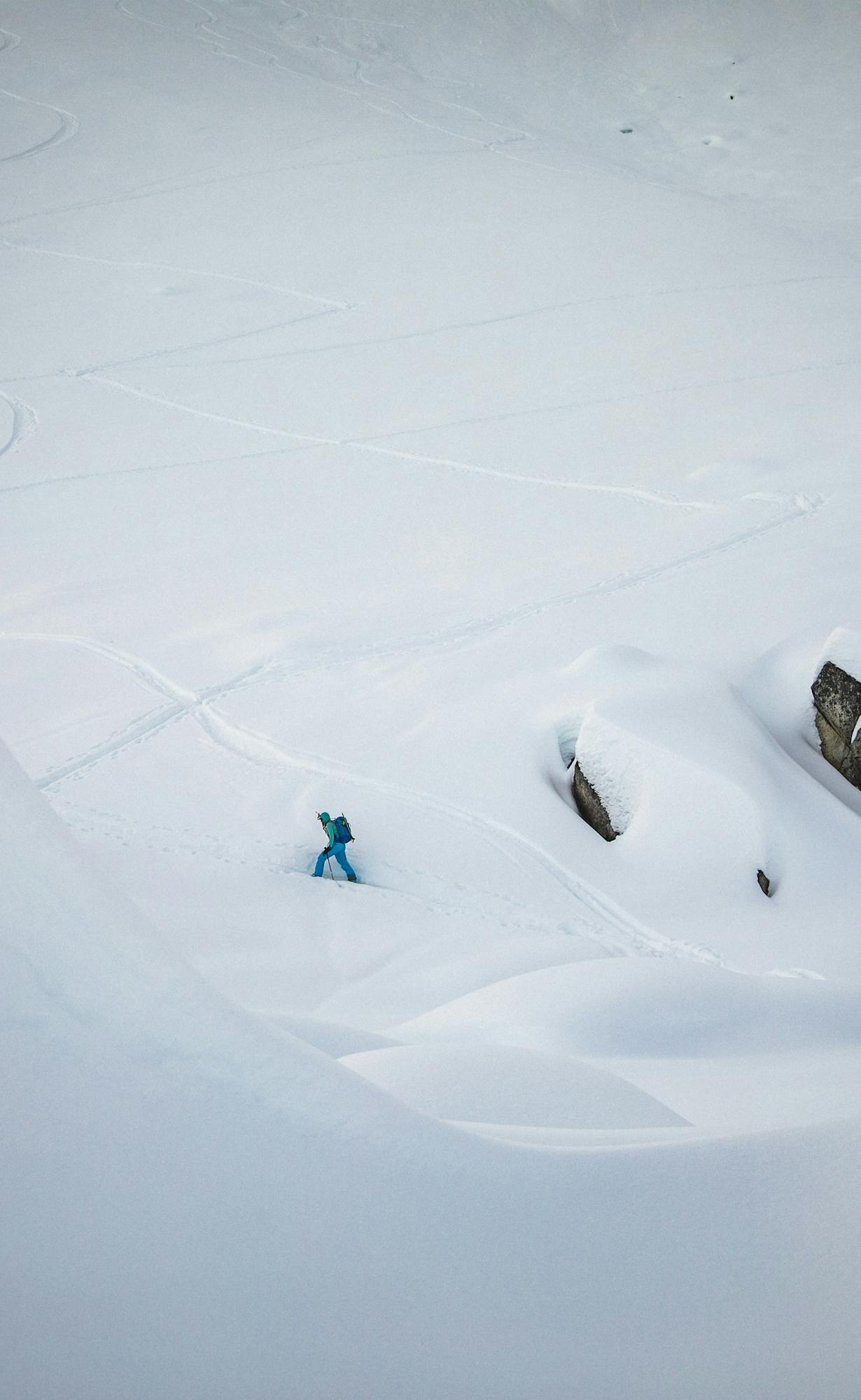Progress Over Perfection
Words by Carolyn Highland, Photos by Joe Connolly
When Stio Ambassador Carolyn Highland returns to ski Lost Couloir in Alaska eight years after one of her most difficult ski days ever, she’s determined to measure just how far she’s come—and to find joy in the experience no matter what.
Photos by Joe Connolly
2023
Skinning up the drainage, I can feel the ghosts of one of my worst ski days all around me. The air is frigid like it was that day, seeping through my layers and stinging exposed skin. It’s hard to stay present, to focus on moving forward.
Today, it’s a bluebird afternoon in Hatcher Pass, Alaska, and my partner Andy and cousin Joe and I are making our way north past Skyscraper Peak and Marmot Peak and Microdot, toward Lost Couloir. The chute splits the face of Granite Mountain, maxing out around 45 degrees at the top. It is north-facing in a south-facing drainage—hidden from sight as you approach until you reach the base. I think of everything I’ve done since I was here last, and try not to let the small rumble of doubt in the pit of my stomach grow any louder.
2015
I arrived in Alaska ready to prove something. My identity as a backcountry skier was a burgeoning one, and I felt eager to test myself in some more consequential terrain.
I followed Joe and his buddy Jonathan from the trailhead through the remains of the Independence Mine, and gazed up into Lost Couloir, a narrow wall of snow that loomed impossibly high up above us.
I had bootpacked once. As I craned my neck to see the top of the line before us, hiking up Left Gully in Tuckerman Ravine a few years earlier suddenly seemed like insufficient training.
Joe and Jonathan took off, both over 6 feet tall and setting a booter to prove it. At 5’3” I was re-kicking each step. I quickly became exhausted and fell behind, my body gripped with a silent terror as we got higher. The apron disguised the slope angle, seeming manageable but gradually getting steeper until I suddenly realized—I was really in it.
I dialed into the fear-based focus famous among mountaineers—the entire world around me fading away except for the next step I had to take. Far from basking in the flow state, I was actively ignoring everything else to not spiral into panic.
2023
Lost Couloir is shaded from the sun by the time we arrive at the base, filled with deep powder that has only one set of tracks. The tight skintrack zippers up the gut of the line, looking less abjectly terrifying than it did when I was 25. Now in my early thirties, I’ve found myself in many other steep chutes—though it takes a conscious effort every time to shake the uninvited jitters.
With far better snow conditions this time, we skin a quarter of the way up, making tight kick turns between the rock walls. I’m moving well, leading the charge, kicking steps that work for all of us. In this moment, the progress feels linear, like a bootpack going straight up. I did this once and felt gripped and nauseous. Now, I am fine.
2015
Way behind, I worked my way uphill for what felt like hours. I didn’t realize I was within a few feet of the top until I heard Joe’s voice. I risked looking up, and felt relief flood through me as I saw there were only a few more steps to go to reach the small ridgeline landing pad. Joe and Jonathan were already perched there, looking infuriatingly relaxed. Joe asked what took me so long, pulling out his camera and insisting on snapping a photo of me. My face in the resulting shot tells you everything you need to know. Not stoked. Pissed to have my suffering belittled by a photograph.
The flat ridge felt like a miracle. I sluggishly dug around in my pack for my water, completely drained from the extended upward motion and laser focus. I peered back down into the couloir, now looking manageable and even fun. I was coming at ski mountaineering squarely from the downhill side of things—always more confident clicked into my bindings.
A few minutes later, Jonathan dropped in, making aggressive tele hop turns. When it was my turn, I side-slipped the first few feet, and then began to open up, taking advantage of the space between the walls. I was instantly lighter, freer. The fear evaporated and I leaned into my turns, feeling lucky rather than terrified to find myself in such a place.
2023
Andy takes a turn setting the booter and I follow, all the way through the slightly wider mouth of the couloir to the ridge. I notice that with the current snow conditions the entrance is nearly vertical—a narrow, packed notch of snow to the ridge. It is easy enough to get up, but I am unable to relax as I take in the view and eat a snack, knowing I still have to get myself down. It’s not something I feel comfortable airing or straight lining with the steep runout below, and I hate downclimbing more than anything. I decide to use my ice axe to do a self-belay scooch down the first few feet. My stomach sinks as I click into my skis and prepare to pull off this awkward maneuver. Joe decides to take a video at precisely this moment. They are what I have come to call crux interviews—capturing my fear and discomfort in real time.
Feeling incredibly uncool, I jam the shaft of my ice axe into the snow and start walking my skis down. I make it through the choke and into the gut of the couloir, a heavy stone of shame sitting in the pit of my stomach. I wanted to ski the line clean, to make an obvious, linear improvement from last time. I wanted it to feel easy, and it still hadn’t.
I take a couple deep breaths and a moment to sling my ice axe back onto my pack. I look down below me, at all the vertical feet of powder I’m about to ski, and feel some of the frustration and disappointment release into the cold air. As usual, a few glorious turns downhill begin to eclipse the struggle of the up. The middle of the crux is always the question—why the hell did I do this again? And the floating, flying of the descent is always the answer. Oh yeah, this.
When I reach the apron, I pause to look back. It wasn’t perfect, but it was progress. Lost Couloir isn’t going anywhere. Who knows who I’ll be when we meet again.
Featruing Stio Ambassador
Top Stories
Check Out All the Top Stories
Follow us @stio
See how people are living the mountain life everyday in our gear.

